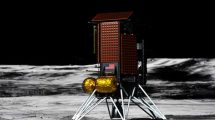 Global government expenditures on space is slated to decrease due to fiscal policies exerting continuous pressure on public finances; improvement is not expected before 2015.
Global government expenditures on space is slated to decrease due to fiscal policies exerting continuous pressure on public finances; improvement is not expected before 2015.
Between 2003 and 2012, governments launched 514 satellites. A total of 744 satellites are planned to launch over the next decade
According to Euroconsult’s newly released research report titled: Government Space Markets, World Prospects to 2022, government spending on space reached a peak in 2012 of USD 72.9 billion, a non-negligible increase compared to 2011 which followed two consecutive years of minimal growth.
This upswing is attributed to increased activity of countries such as Russia, China, India and new world or regional leaders who compensated for budget uncertainties affecting North America and Europe.
Government space programmes should be affected in the short term by an overall flat spending environment and decrease in global funding. The situation is expected to recover in the second part of the decade, driven by a cleaner public finance environment, a new procurement cycle and R&D in historical leading space nations, and sustained spending from new world/regional leaders and nascent programmes. By 2022 global government funding for space activities is anticipated to pass the USD 77 billion mark.
The landscape for civil space activities has experienced profound structural changes in the last decade. In 2003, the top three civil space programmes (US, Europe, Japan) accounted for 90% of world’s civil expenditures. In 2012, their share accounted for only 64% illustrating the “decentralisation” of space investment worldwide.
Significant launch rate to continue
Following a peak launch of 65 satellites in 2011, governments worldwide sustained a dynamic launch rate in 2012 with 58 satellites for civil and defense applications, marking the second highest launch rate over the last decade. Between 2003 and 2012, governments launched 514 satellites. A total of 744 satellites are planned to launch over the next decade.
Spending trends in key applications
Government spending on space follows a logic of R&D and procurement in a variety of applications domains, each driven by national priorities according to strategic, economic and technical interests. Global trends in 2012 included:
- Manned spaceflight represented 17% of the global spending at USD 10.6 billion
- Earth observation reached over USD 10 billion (+7.5%)
- Satcom grew by 5%, representing 14% of the global budget (USD 8.8 billion)
- Launchers spending totaled USD 7.5 billion, (+24%)
- Space science and exploration increased by 6% to reach USD 5.8 billion
- Satellite navigation increased 18% at USD 4.3 billion
- Space security dropped to USD 1.9 billion (-43%)
t
t
t
t
t
t
t
“The government space sector is experiencing profound structural transformation and its international landscape will be radically different from what it was 10 years ago. The emergence of new world and regional leaders and the growing interest from many new countries in space technologies and applications together welcome new opportunities for institutional and industry cooperation. This is very good news for the space sector,” concluded Steve Bochinger.












Add Comment